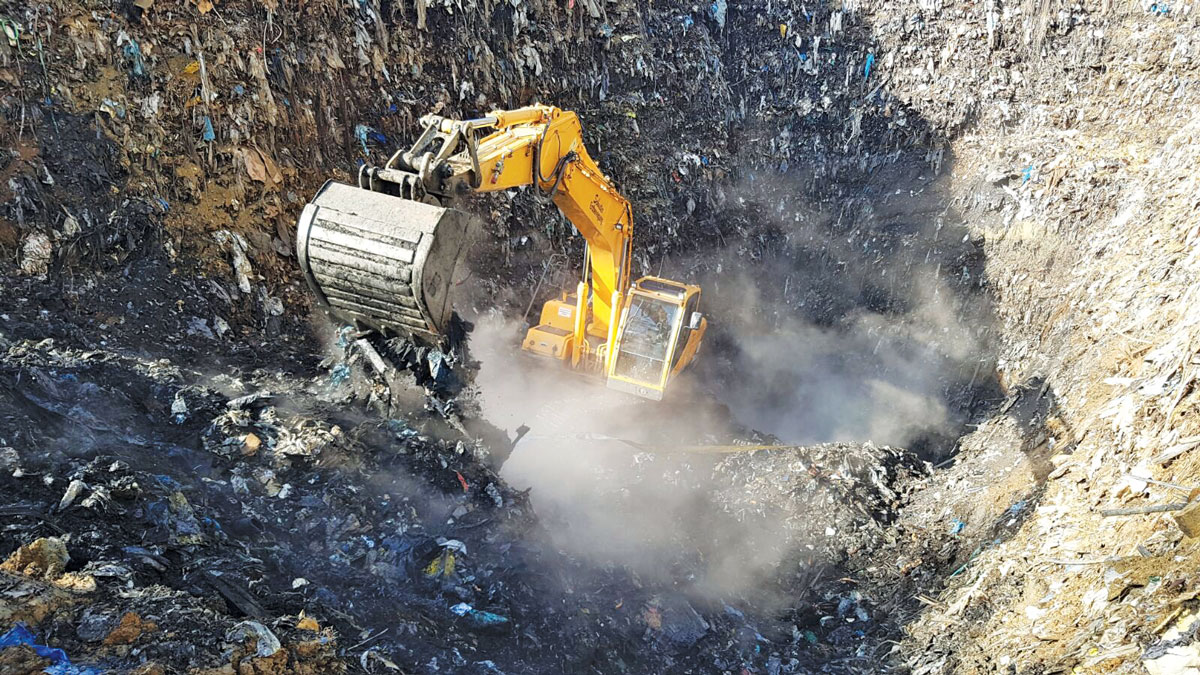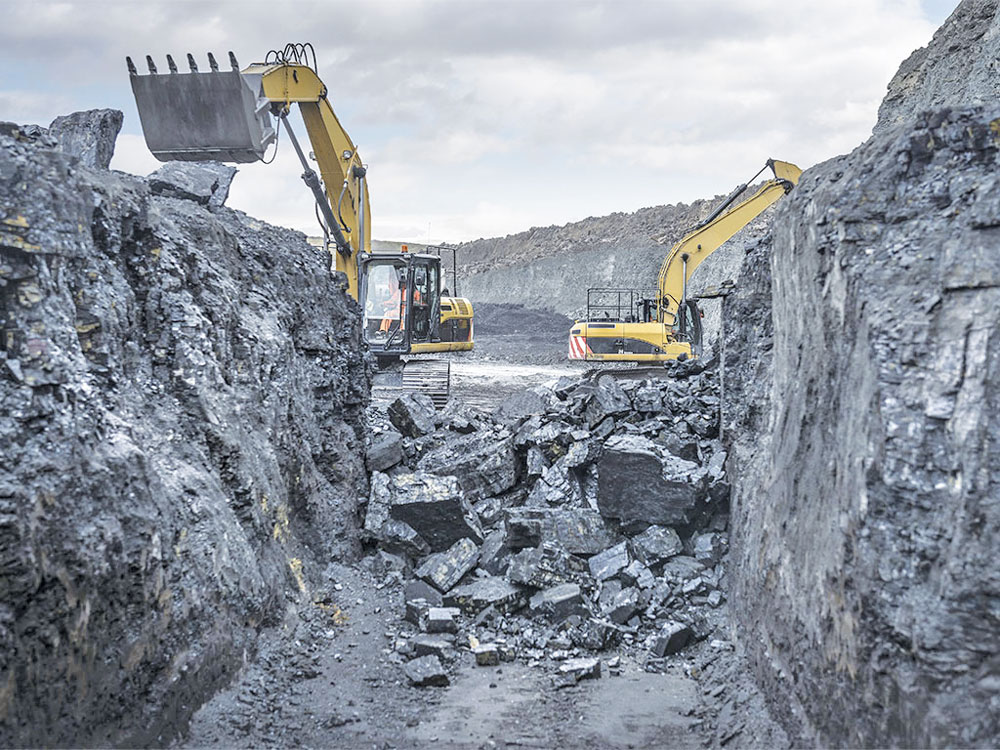MINING POTENTIAL
Mining equipment market is expanding speedily all across the world due to the development in new mining tools and machinery. Technology is becoming a critical differentiating factor for manufacturers and mining companies as digitization and automation are continuously gaining momentum.

Mining equipment market is expanding speedily all across the world due to the development in new mining tools and machinery. Technology is becoming a critical differentiating factor for manufacturers and mining companies as digitization and automation are continuously gaining momentum. Key players are focusing on reducing the cost of extraction and equipment maintenance. Moreover, the industry is witnessing a large scale adoption of different clusters of technologies, such as robotics and automation, smart sensors, and 3D printing to enhance operational efficiency. Equipment Times finds the current scenario of mining equipment market, smart and intelligent machines, employment generation and challenges in this space.
The Covid-19 pandemic had an immediate impact on the economy and that impact goes across all industries, including mining. Significant price drops were observed across major commodities, while in some cases, prices remain passive. For example, demand for metallurgical coal and thermal coal has decreased, while demand for gold and iron ore has increased.
However, the market is expected to witness significant growth as the Increasing use of electric machinery in underground mining and increasing demand for metals and commodities occupy a major share in the market. The increasing need for mineral fertilizers to improve agricultural yield, rise in construction of roads and railway tracks through hilly areas are expected to fuel the demand for mining activities in India.
Ongoing digital mine innovation is expected to transform the key aspects of mining over the next few years. Increased investment, along with government support for the digital mine innovation, is expected to trigger the demand for mining equipment over the forecast period. Improvements and innovations in extraction technologies and equipment have contributed to the betterment of ore grades, thus extending the life of older mines.
Underground mining…
Underground mining is the process of extraction of minerals and ores that are buried deep inside the earth’s crust. Major types of underground mining techniques that are used include hard and soft mining. With hard underground mining the process of excavation of hard minerals such as lead, copper, nickel, iron, gold and silver is carried out. However, minerals such as potash, coal, oil shale and other minerals are extracted with the help of soft underground mining techniques. Various types of mining equipment are available in the market based on the type of mineral that needs to be extracted. Equipment used for underground mining include overhead loaders, draglines, shovels, haul trucks, front end loaders, gathering-arm loaders, conveyors, etc.
Underground Mining Equipment Market Trends
Catalyzed by stable economic growth across both developed and developing regions, increasing levels of disposable incomes and a rise in the middle-class population, there has been a strong growth in the demand of various minerals such as iron, gold, copper, coal, lead, aluminum, silver, etc. This has catalyzed a rising demand for underground mining equipment. Moreover, the substantial rise in the consumption of energy in the form of coal and nuclear fuels as a result of increasing urbanization and industrialization is also creating a positive impact on the demand of underground mining equipment. Additionally, underground mining causes minimum harm to the environment as compared to surface mining. With explosions being made underground, no toxic gases are released in the surroundings. Other factors that are currently driving this market include – lack of manual labor and its rising costs, increasing focus on improving the yield and productivity, enhanced use of high-quality equipment in mining, etc.
Mining in India…
India holds a fair advantage in production and conversion costs in steel and alumina. Its strategic location enables export opportunities to develop as well as fast-developing Asian markets.
As of FY21, the number of reporting mines in India were estimated at 1,229, of which reporting mines for metallic minerals were estimated at 545 and non-metallic minerals at 684.
Rise in infrastructure development and automotive production are driving growth. Power and cement industries are also aiding growth for the sector. Demand for iron and steel is set to continue given the strong growth expectations for the residential and commercial building industry.
Market Size
Coal production in the country stood at 715.95 million tonnes (MT) in FY21. In April 2021, coal production stood at 516 lakh tonnes.
Iron ore production in the country stood at 189 million tonnes in FY21. In May 2021, iron ore exports stood at US$ 574.56 million, compared with US$ 457.05 million in May 2020.
In FY20, India had a total number of 914 steel plants producing crude steel. In FY21, India’s crude steel production stood at 102.49 million tonnes. According to worldsteel, crude steel output in India registered a 46.9% YoY growth to reach 9.2 million tonnes in May 2021, as compared with 5.8 million tonnes of crude steel output registered in May 2020.
Production of aluminium stood at 3.65 MT in FY20. In value terms, aluminium export from the country stood at US$ 20.18 million in FY20.
Road Ahead
There is a significant scope for new mining capacities in iron ore, bauxite and coal and considerable opportunities for future discoveries of sub-surface deposits.
Infrastructure projects continue to provide lucrative business opportunities for steel, zinc, and aluminium producers.
Iron and steel make up a core component for the real estate sector. Demand for these metals is set to continue given strong growth expectations for the residential and commercial building industry.
In the case of mining equipment, the technology depends on the mining operations prevailing in the country. In India, open cast mining is much more popular than underground mining. Hence for the equipment required for open cast mining like dumpers, dozers, shovels, draglines and excavators, the level of technology of the equipment manufactured is at par with international standards except with respect to usage of electronic controls, hydraulic systems and engines adhering to the latest emission norms. Long wall mining technology was introduced in the early 1970s with the help of the UK and Poland in some of the coalfields. During that period some of the PSUs like MAMC and Jessop had imported technology from the UK to manufacture these equipment.
Union Steel Minister calls for Creation of an Ecosystem for Coal Gasification and Development of Indigenous Technology The Union Steel Minister, Ram Chandra Prasad Singh chaired a meeting here today with the stakeholders from the steel industry, consultancy providers and CSIR- Central Institute of Mining and Fuel Research (CIMFR) along with officials of Steel Ministry to deliberate on the prospects of using coal gasification in steel production through the Direct Reduced Iron (DRI) route.
The Steel Minister emphasised the need for development of indigenous coal gasification technology which is suited for the indigenously produced coal. Singh urged the stakeholders to come together in development of the technology which can be gainfully utilised by the steel industry and help in reducing the dependence of imported coal and promote “Atmanirbhar Bharat”.
Discussions were held on the present scenario and the way forward for promoting coal gasification in the steel sector. Various Coal Gasification Technologies commercially available, their pros & cons, and their suitability for Indian high-ash noncoking coal were discussed. Development of Indigenous Technology for coal gasification alongwith technologies for recovery of the by-products for applications in the various sectors such as chemicals, fuels, fertilisers etc. were also discussed. Cost analysis of coal gas vis-à-vis the natural gas and issues & constraints for adoption of Coal Gasification based DRI plants in the country were also deliberated. Government interventions required to address the issues & constrains and the way forward for adoption of Coal Gasification based DRI plants in the country was also discussed.
The Steel Minister directed that to facilitate creation of an ecosystem for coal gasification and development of indigenous technology a Committee with members of the concerned Ministries viz. Ministry of Power, Ministry of Coal, Ministry of Mines, Ministry of Petroleum & Natural Gas along with the stakeholders from the steel industry, consultancy providers, research laboratories CSIR-CIMFR, technology providers etc. be constituted.
Mining Laws
India’s mining law has remained relatively unchanged since the initial legislation governing the sector was introduced in 1957, with the Mines and Minerals (Development and Regulation) Act, or the MMDR Act. MMDR provides a regulatory framework that categorises minor minerals – those governed by state governments in accordance with delegated powers – and major minerals, the commodities overseen by India’s Central Government. Minor minerals include stones for building, clay, and sand, whereas major minerals include all minerals other than mineral oils, petroleum, and natural gas.
Rise In Use of Telematics
Technological advancements and innovations are expected to drive the mining machinery industry growth. Several technologies that are revolutionizing the industry include automation, Internet of Things (IoT), 3D imaging, and plasma technology. These machines are developed using materials and technologies that can withstand high temperature and pressure. The machines are exposed to high radiation and chemical substances that can directly affect the functioning of the parts. The players in the market are focusing on such challenges and are developing machines that can be used for the extraction of specific minerals or metals.
The use of telematics in the mining industry has proven to be a game changer. Internet of things (IoT) sensors provide feedback to the fleet manager, which ensures lower downtime due to malfunctions and helps plan maintenance activities. With an increasingly competitive environment across all industries, companies are constantly looking for process optimization, which, in turn, has increased the demand for automation in the mining industry. Drones are being used for exploration and surveillance of mines.
Drones ensure that areas are clear before blasts, track post-blast fumes, and improve the overall safety of sites. Automation and teleoperation systems in the mining industry significantly improve productivity and safety. Thus, sales of new mining machinery synced with telematics solutions are expected to drive the mining machinery market.
Wirtgen is the market leader in surface mining, offering a technically mature product portfolio for opencast mining.
Wirtgen is global market leader in the manufacturing of machines for cutting rock in open cast mining operations. Wirtgen Surface Miners cut primary resources such as coal, gypsum, iron ore, salt, phosphate, bauxite, limestone or granite, achieving high degrees of purity in the process.
 Speaking about the equipment which are the demand drivers in the mining sector and how geared up is the company to meet this demand surge, Ramesh Palagiri – Managing Director & CEO at Wirtgen India, said, “They are increasingly used as primary extraction equipment also in newly opened-up opencast mines or extensions of existing opencast mine operations. WIRTGEN has varied range of Surface Miners based on the applications and cutting depth- 220 SM, 220 SM 2.5, 220 SM 3.8, 280 SM.”
Speaking about the equipment which are the demand drivers in the mining sector and how geared up is the company to meet this demand surge, Ramesh Palagiri – Managing Director & CEO at Wirtgen India, said, “They are increasingly used as primary extraction equipment also in newly opened-up opencast mines or extensions of existing opencast mine operations. WIRTGEN has varied range of Surface Miners based on the applications and cutting depth- 220 SM, 220 SM 2.5, 220 SM 3.8, 280 SM.”
Elaborating on how smart and intelligent are the latest products in terms of technology such as the Internet of Things (IoT), robotics and plasma, 3D imaging, automated drilling and others, Palagiri further said, “Wirtgen is the market leader in surface mining, offering a technically mature product portfolio for opencast mining which has been tried and tested in operations around the globe.
The Surface Miners from Wirtgen cover the full performance range in mining, earthworks and rock construction to up to 15 million tonnes of mining material per machine per year- this is truly unique! Wirtgen surface miners offer cutting widths ranging from 2.20 m to 4.20 m and cutting depths of between 20 cm and 83 cm. Wirtgen is the only manufacturer covering a scope of performance ranging up to 3,000 tonnes per hour with direct loading by conveyor belt.
WIRTGEN surface miners cut primary resources such as coal, gypsum, iron ore, salt, phosphate, bauxite, limestone or granite, achieving high degrees of purity in the process. They are increasingly used as primary extraction equipment also in newly opened-up opencast mines or extensions of existing opencast mine operations.”


Hits: 134








